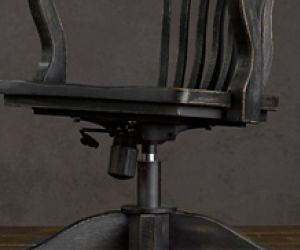Turn around

“Where you stand depends on where you sit”, Rufus Miles once famously stated, suggesting our perspective is molded by … our perspective. My corollary to the maxim halves the word count to “Go to the problem”. It’s the first rule of leadership. Go to the problem. Don’t let it be described to you through multiple disconnecting layers of staff, phone calls and e-mails. Go to the problem. Look at it from multiple vantage points. Listen to multiple voices. Then put on the team’s collective thinking caps.
For the past few weeks I’ve found myself walking through Jersey Farms, Cromwell Circle and Walsh Pointe neighborhoods, and parked on the shoulder of Jersey Ridge Road, watching traffic and pedestrians. The hard traffic numbers come from the IDOT engineers, but I’ve found watching life go by adds an ethnographic understanding to the numbers. The protecting neighborhoods and connecting neighborhoods plans related to the proposed casino rezoning were born from pairing this ethnography with IDOT data, but one vexing problem remained.
Some Jersey Farms residents desired a traffic signal at Veterans Parkway and Jersey Ridge, but the signal didn’t meet the traffic counts needed for a signal. Plus, every time you add a signalized intersection, you add accidents. That’s just the way it works – you ask thousands of drivers to do something, and some will get it wrong, or the weather will be bad, or both. Given the topography, traffic volume and speed involved, some of these certain future accidents would be severe. Trading ease of turning left out of Jersey Farms to head south on Jersey Ridge Road for adding severe accidents at the next intersection north was a trade staff was not willing to make.
So I sat on the shoulder of the road some more and watched. Just north of the Veterans Parkway intersection, I could watch all the traffic at the three intersections. The idea struck me to solve the problem with a roundabout. Roundabouts are very efficient and, because you have to slow down to navigate them, they reduce injury accidents to almost zero. It seemed an elegant solution; it would flow more than enough traffic and improve safety by reducing speed and eliminating high speed “T” crashes. But, as I sat watching traffic flow south on Jersey Ridge, it wasn’t apparent to me that it would absolutely solve the Jersey Farms left turn out of the neighborhood problem. The cars coming from the south would be slower, but there may not be the same duration of traffic gaps a traffic signal would provide.
I drove to PW and talked about a roundabout solution with Mike and Gary. They thought the idea had merit, and noted someone who wanted to go south on Jersey Ridge from Jersey Farms could always turn right out of the neighborhood and use the roundabout itself as a safe and convenient way to complete a “U” turn to head south. It might add thirty seconds to their route, but the roundabout would be safer and more convenient than what they have now.
I sat there dumbfounded for a second. This was instantly obvious to Gary and Mike, sitting in Mike’s office, but I had missed it. I had dutifully gone to the problem, but in facing south rather than north, I had missed the full impact of the solution. If where you stand depends on where you sit, bring a chair that rotates.

